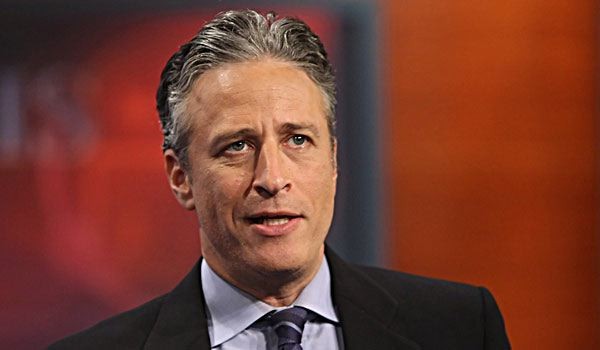Earlier this month, The Daily Show ran a segment by actor and comedian Aasif Mandvi which aimed to debunk the notion that America has the world’s best healthcare.
Videos by Rare
Naturally, the expert Mandvi interviews, philanthropist Stan Brock, already agrees with Mandvi’s conclusions. After Brock rattles off a number of countries that already rank above America in health care, the screen switches to a graphic that ranks America number 37 in healthcare worldwide.
This number is based on the 2000 report from the World Health Organization “Health Systems: Improving Performance,” which ranks 191 different nations on healthcare. The same study is cited by Paul Krugman in his book “The Conscience of a Liberal” in the chapter where he argues for single-payer health care.
The WHO study, however, suffers from so many flaws that it brings into question whether or not those who cite it even bothered to read the thing.
First off, there are two different WHO rankings on healthcare: overall attainment (OA) and overall performance (OP). Using attainment, America ranks 15th, but naturally critics choose whatever looks worse.
Still, only a few of the factors the WHO uses when calculating national performance rankings are even relevant to how well a healthcare system functions.
There is a reason for the shoddy design of this study. When it was published, the organization was under the control of former Norwegian prince minister Gro Harlem Brundtland, a staunch socialist.
Speaking on the issue of healthcare, Brundtlant stated, “The ultimate responsibility for a country’s health system’s performance rests with the government, but the impact lies disproportionately on the poor.”
Brundtland oversaw a study whose measurements were biased against any non-socialized system. It was a deck of cards, stacked heavily against American healthcare. The criteria (with notes!) are below:
Health level (25%)
This factor is measured by a country’s life expectancy. If “Nation A” has a lifespan of 80 years, and “Nation B” a lifespan of 40 years, it would be reasonable to conclude that the healthcare system of Nation A is superior. However when examining the difference in lifespan between first world nations, the difference is only months or, at most, a few years. Factors aside from medical care can affect the average lifespan by only a hair, but this is still enough to make us appear statistically inferior.
Relative to other first world nations, the U.S. ranks poorly in terms of life expectancy. But the U.S. also has a relatively high number of homicides, suicides, and car accidents compared to other first world nations. All of these variables drag down life expectancy, and no healthcare system can prevent them.
Health distribution (25%)
This does not actually measure the quality of medical care, just how unequal the care is given to different individuals. To paraphrase what one Cato Institute report (pdf) has pointed out; if “Group A” gets great medical care, while group B gets good medical care, they would rank behind “Group’s B and C” even if both B and C got horrible care.
Or to give a historical example, it would be like saying that the U.S.S.R. was superior to the U.S. simply because everyone in the U.S.S.R. had the same living standards. That the poor in the U.S. have a higher standard of living than everyone in the U.S.S.R. is treated as an irrelevance.
Responsiveness (12.5%)
When the WHO measures “responsiveness,” the last thing that it measures is responsiveness. What it really measures is a nation’s “respect for persons,” which is determined by the confidentiality of an individual’s health information, the “autonomy to participate in choices about one’s own health,” and “respect for dignity of the person.”
Responsiveness Distribution (12.5%)
Here is that word “distribution” again. This factor suffers from the same uselessness of Health Distribution. Both do not actually measure quality of health care.
Financial fairness (25%)
This is calculated by finding the percentage of income households from each income bracket use for healthcare, then measuring the difference paid across brackets. The poor and rich pay virtually the same amount on healthcare yearly, the top 20% paying $4,451 in 2003, and the bottom 20% $4,447.
Obviously, the poor are going to spend a larger percentage on health care, as they do on literally every other good or service they pay for. They have less money. Since there is bound to be a gap, any economy that has some element of the market involved in a healthcare system will automatically rank poorly worldwide according to this standard.
The only way for us to rank better in this factor would be to have greater government involvement in healthcare, perhaps by switching over completely to a single payer system. Either way, the standard is circular, favoring government intervention no matter what.
Quite telling about WHO’s study is that “distribution” played a role in so many of their criteria. “Responsiveness distribution” was ranked twice as important as “responsiveness,” a term that is also next to useless.
Indeed, Brundtland herself admits that quality of care isn’t all that important to her when comparing healthcare systems, as she wrote in the introduction: “Where health and responsiveness are concerned, achieving a high average level is not good enough: the goals of a health system must also include reducing inequalities, in ways that improve the situation of the worst-off.”
And here’s the kicker, smothered in an extra layer of bureaucratic boring sauce: “In this report attainment in relation to these goals provides the basis for measuring the performance of health systems.”
So, sure, the United States ranks poorly in health care, when you design a study that measures almost everything other than healthcare.
That critics of U.S. healthcare pre-Obamacare would cite such a study is not surprising. But we shouldn’t let The Daily Show and Paul Krugman get away with it.



